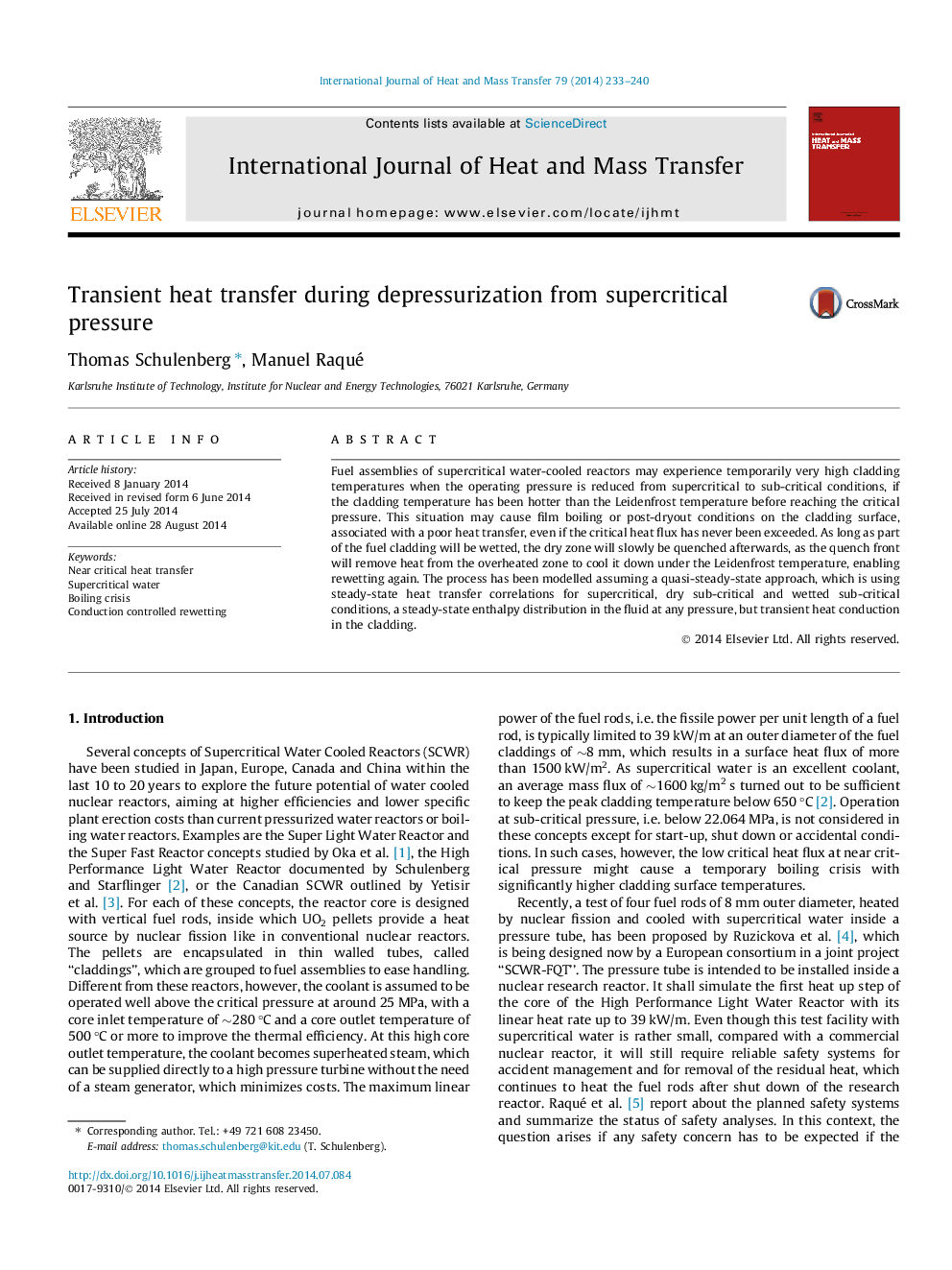| Article ID | Journal | Published Year | Pages | File Type |
|---|---|---|---|---|
| 657402 | International Journal of Heat and Mass Transfer | 2014 | 8 Pages |
Fuel assemblies of supercritical water-cooled reactors may experience temporarily very high cladding temperatures when the operating pressure is reduced from supercritical to sub-critical conditions, if the cladding temperature has been hotter than the Leidenfrost temperature before reaching the critical pressure. This situation may cause film boiling or post-dryout conditions on the cladding surface, associated with a poor heat transfer, even if the critical heat flux has never been exceeded. As long as part of the fuel cladding will be wetted, the dry zone will slowly be quenched afterwards, as the quench front will remove heat from the overheated zone to cool it down under the Leidenfrost temperature, enabling rewetting again. The process has been modelled assuming a quasi-steady-state approach, which is using steady-state heat transfer correlations for supercritical, dry sub-critical and wetted sub-critical conditions, a steady-state enthalpy distribution in the fluid at any pressure, but transient heat conduction in the cladding.
